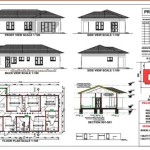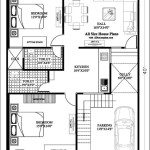Plans for House Building: Essential Aspects to Consider
Building a house is a significant undertaking that requires careful planning and execution. From choosing the right location to selecting the perfect design and materials, numerous factors contribute to the success of any house building project. One of the most crucial aspects to consider is the house building plans, as they serve as the blueprint for the entire construction process.
House building plans are technical drawings that provide detailed instructions on every aspect of the construction, including the foundation, framing, plumbing, electrical, and HVAC systems. These plans are essential for obtaining building permits, communicating with contractors, and ensuring that the final product meets your requirements and adheres to building codes.
When creating house building plans, several essential elements must be considered to ensure a successful and functional outcome. These include:
1. Site Plan:
The site plan outlines the location of the house on the property, including dimensions, setbacks, driveways, and landscaping. It shows how the house will be oriented in relation to the sun and prevailing winds, which can affect energy efficiency and comfort.
2. Floor Plans:
Floor plans present a layout of each story of the house, showing the placement of rooms, walls, doors, and windows. They indicate the size and shape of each room and their relationship to one another, allowing for efficient use of space and flow of traffic.
3. Foundation Plan:
The foundation plan details the type and dimensions of the foundation, which supports the entire structure. It includes information on footings, walls, and any necessary drainage systems, ensuring structural stability and preventing water damage.
4. Framing Plan:
The framing plan shows the framework of the house, including the location and size of studs, joists, and rafters. It provides detailed instructions for constructing the skeleton of the house, ensuring strength, durability, and resistance to environmental forces.
5. Roof Plan:
The roof plan depicts the style, pitch, and materials of the roof. It includes details on the layout of rafters, trusses, and any skylights or chimneys, ensuring proper drainage, ventilation, and protection from the elements.
6. Plumbing Plan:
The plumbing plan outlines the location of all plumbing fixtures, pipes, and drains. It shows the size and type of pipes used, as well as the placement of valves, water heaters, and other appliances, ensuring efficient water supply and waste disposal.
7. Electrical Plan:
The electrical plan indicates the location of all electrical outlets, switches, light fixtures, and wiring. It also includes details on the electrical panel, circuit breakers, and grounding systems, ensuring safe and reliable electrical distribution throughout the house.
In addition to these essential elements, house building plans may also include additional details such as lighting design, interior finishes, and landscaping plans. These plans provide a comprehensive guide for the construction process, helping to avoid costly mistakes and ensure a quality finished product.
When choosing a house plan, it is essential to consider your lifestyle, budget, and specific requirements. Working with an experienced architect or designer can help you customize a plan that meets your unique needs and preferences, ensuring that your dream home becomes a reality.

Easy To Build Houses And Floor Plans Houseplans Blog Com

House Plans How To Design Your Home Plan

Floor Plans Learn How To Design And Plan

Small House Design 2024001 Pinoy Eplans Floor Plans

House Plans How To Design Your Home Plan

House Plan Maywood Sater Design Collection

Low Budget Simple House Design Plans For Builders Blog Builderhouseplans Com

House Plan Stone Bridge Sater Design Collection

Building On The Affordable House Plans Of 2024 Houseplans Blog Com

House Plans How To Design Your Home Plan








